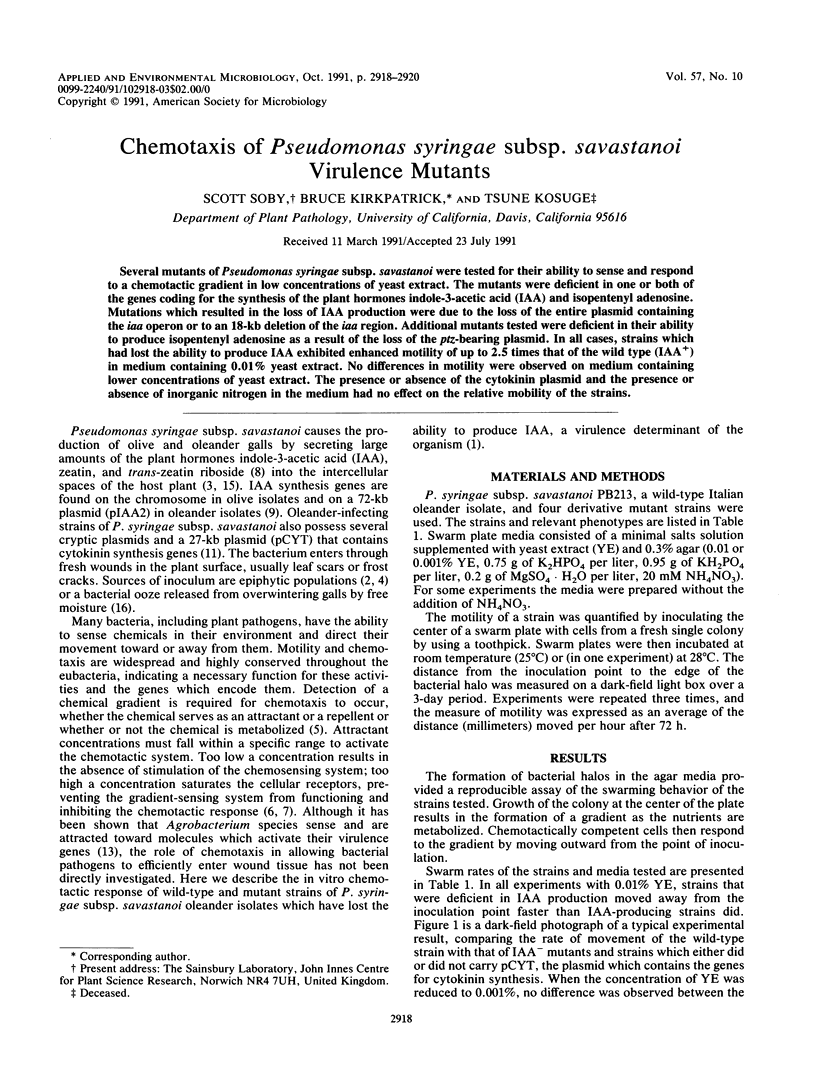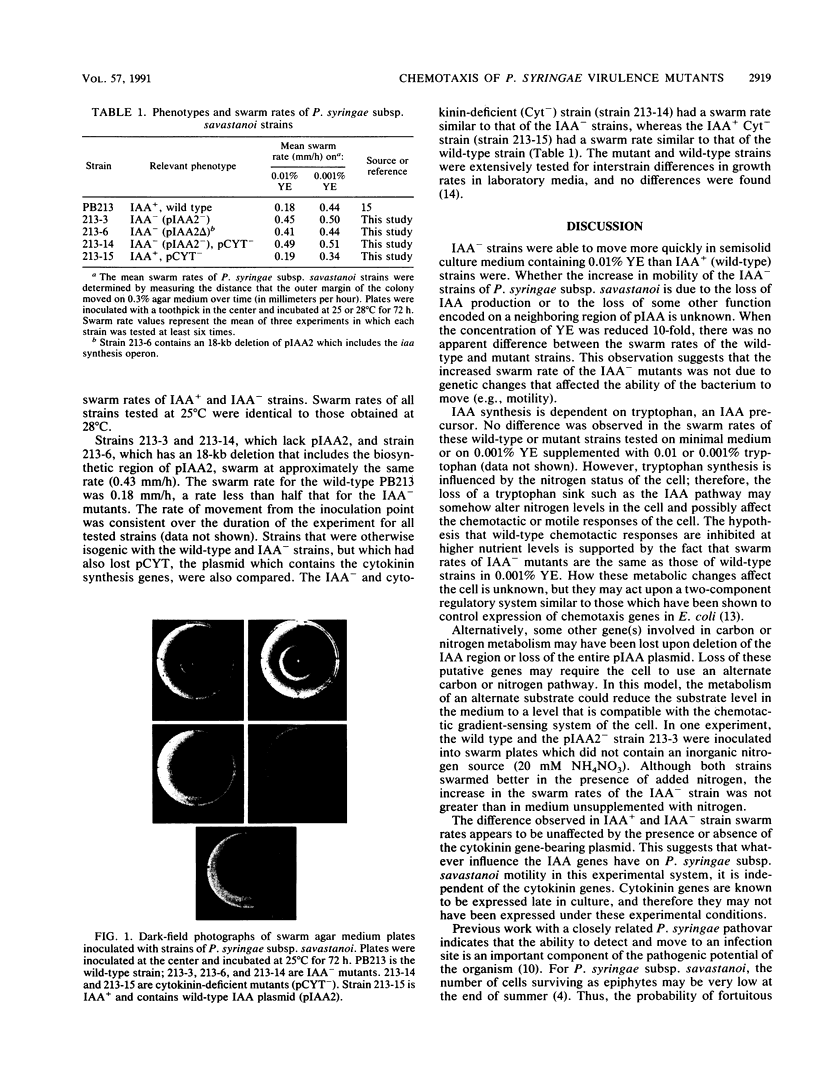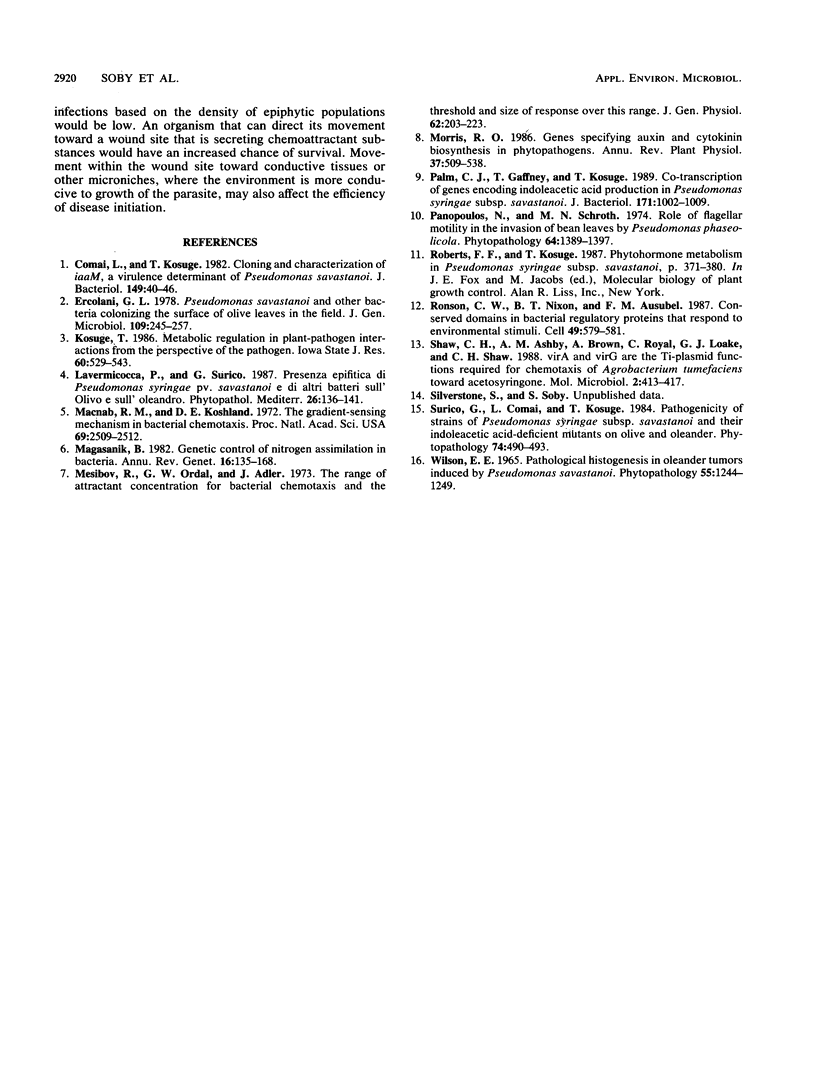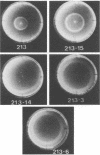Abstract
Several mutants of Pseudomonas syringae subsp. savastanoi were tested for their ability to sense and respond to a chemotactic gradient in low concentrations of yeast extract. The mutants were deficient in one or both of the genes coding for the synthesis of the plant hormones indole-3-acetic acid (IAA) and isopentenyl adenosine. Mutations which resulted in the loss of IAA production were due to the loss of the entire plasmid containing the iaa operon or to an 18-kb deletion of the iaa region. Additional mutants tested were deficient in their ability to produce isopentenyl adenosine as a result of the loss of the ptz-bearing plasmid. In all cases, strains which had lost the ability to produce IAA exhibited enhanced motility of up to 2.5 times that of the wild type (IAA+) in medium containing 0.01% yeast extract. No differences in motility were observed on medium containing lower concentrations of yeast extract. The presence or absence of the cytokinin plasmid and the presence or absence of inorganic nitrogen in the medium had no effect on the relative mobility of the strains.
Full text
PDF


Images in this article
Selected References
These references are in PubMed. This may not be the complete list of references from this article.
- Comai L., Kosuge T. Cloning characterization of iaaM, a virulence determinant of Pseudomonas savastanoi. J Bacteriol. 1982 Jan;149(1):40–46. doi: 10.1128/jb.149.1.40-46.1982. [DOI] [PMC free article] [PubMed] [Google Scholar]
- Macnab R. M., Koshland D. E., Jr The gradient-sensing mechanism in bacterial chemotaxis. Proc Natl Acad Sci U S A. 1972 Sep;69(9):2509–2512. doi: 10.1073/pnas.69.9.2509. [DOI] [PMC free article] [PubMed] [Google Scholar]
- Magasanik B. Genetic control of nitrogen assimilation in bacteria. Annu Rev Genet. 1982;16:135–168. doi: 10.1146/annurev.ge.16.120182.001031. [DOI] [PubMed] [Google Scholar]
- Mesibov R., Ordal G. W., Adler J. The range of attractant concentrations for bacterial chemotaxis and the threshold and size of response over this range. Weber law and related phenomena. J Gen Physiol. 1973 Aug;62(2):203–223. doi: 10.1085/jgp.62.2.203. [DOI] [PMC free article] [PubMed] [Google Scholar]
- Palm C. J., Gaffney T., Kosuge T. Cotranscription of genes encoding indoleacetic acid production in Pseudomonas syringae subsp. savastanoi. J Bacteriol. 1989 Feb;171(2):1002–1009. doi: 10.1128/jb.171.2.1002-1009.1989. [DOI] [PMC free article] [PubMed] [Google Scholar]
- Ronson C. W., Nixon B. T., Ausubel F. M. Conserved domains in bacterial regulatory proteins that respond to environmental stimuli. Cell. 1987 Jun 5;49(5):579–581. doi: 10.1016/0092-8674(87)90530-7. [DOI] [PubMed] [Google Scholar]
- Shaw C. H., Ashby A. M., Brown A., Royal C., Loake G. J., Shaw C. H. virA and virG are the Ti-plasmid functions required for chemotaxis of Agrobacterium tumefaciens towards acetosyringone. Mol Microbiol. 1988 May;2(3):413–417. doi: 10.1111/j.1365-2958.1988.tb00046.x. [DOI] [PubMed] [Google Scholar]



